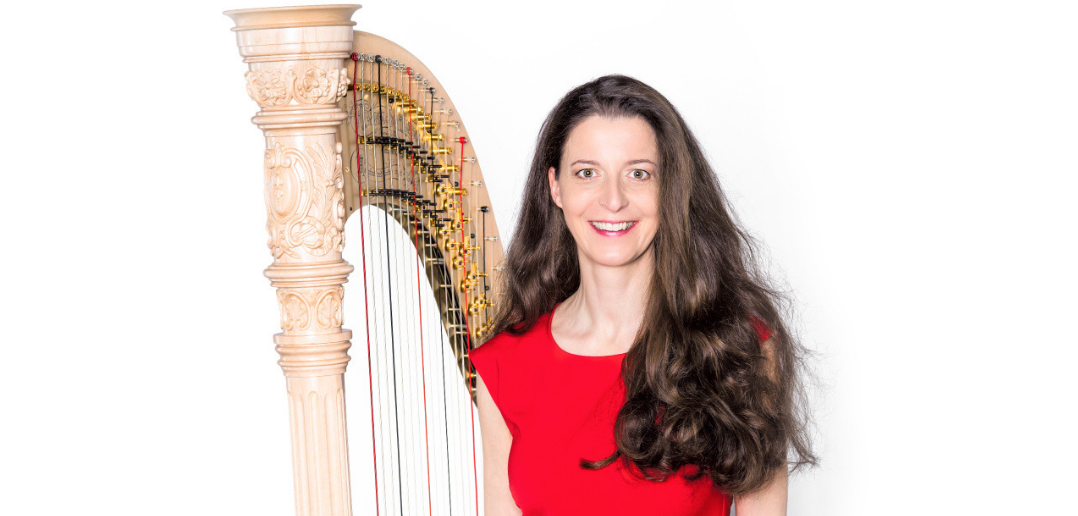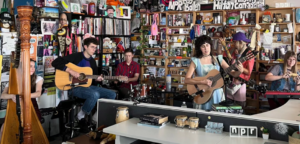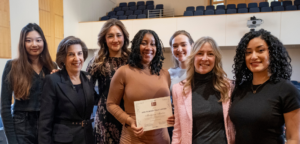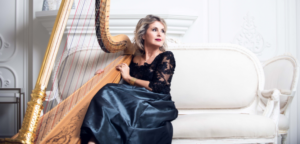The next installment of Salvi Harps’ Arpissima event series is set to take place April 12–14 in Mira, Italy. Featuring German harpist Silke Aichhorn, the harp extravaganza offers concerts, masterclasses, and a Salvi instrument and accessories exhibit. We sat down with Aichhorn to learn more.
Tell us a little bit about what you’ll be doing at Arpissima next week. What pieces are you featuring in your recital?
Honestly, I don’t know yet in detail what exactly I will be doing in Mira, but I just decided my concert program. I choose Handel’s Queen of Sheba, Spohr since I’m German, Mascagni for Italy, The Moldau with my arrangement of the “Country Wedding,” Cheshire—a piece by the Turkish composer Fazil Say, and Tchaikovsky. Before Mira, I have seven concerts and four other gigs, so my brain is not yet focused on Italy.
On Sunday, April 14, the brochure lists a “musical marathon” with you. What does that entail?
Big surprise. I think it will be a marathon with teaching, listening, enjoying the harp.
What are you looking forward to most in Mira?
I always look forward to great Italian food! Unfortunately, I’ll only be in Italy for two and a half days. I am touring a lot at the moment, and my husband and our kids want to see me from time to time… so, no time for extra sightseeing. I’ll take an early plane back to Munich on Monday morning, as I’m on the jury in a German youth competition in the afternoon.
I read that you have recorded 24 albums! Tell us a little about your recording process.
As I have a lot of my 24 recordings on my own label, HÖRMUSIK, I can choose what I love. I only record pieces I love and also the public loves. Beside my chamber music CDs (a harp duo, duos with violin and flute, a trio with two singers, two world premieres with harp concertos from Eichner and Hertel, recitation and harp, and a children’s CD), I have recorded 11 solo albums. I’m always looking for new pieces. The main problem, in my opinion, is the relatively small harp repertory. Looking for unknown music is one of my guilty pleasures. Why always record the same “big five,” which you can find on many recordings?
Some of my solo albums are thematic, like water/nature music or St. Petersburg and Paris. I have also recorded three CDs with music for hospice and palliative work: the calm, tender, caressing music of Bach, Schubert, Gluck, Wagner, and others. When I have enough pieces, I record a new CD. Once my repertoire is ready, I’m quite fast: I recorded my Christmas CD with baroque pieces and played (not sung) Christmas carols in one day. Normally I take three days to record with my sound master. With cutting, printing, and editorial work, it generally takes me about one month to have an album ready. I’m not patient, so if I can do it fast, I do it fast. If I work with other labels, I can be a bit of a pain in the neck, trying to accelerate the process.
In addition to all of that, you also seem to stay quite busy arranging music. You mentioned earlier that in addition to Trneček’s transciption of The Moldau, you’ll be performing your arrangement of the “Country Wedding” scene, which is published on Harp Column Music along with eight of your other arrangements. What inspired you to start transcribing?
My inspiration is the lack of enough good music for the harp, in my opinion. For example, playing 19th century pieces with variations makes me crazy. One variation of scales, one variation with harmonics, then in minor, followed by arpeggios. Puh. I look for music with sense and statement, pieces that are musically touching. That’s why I often play piano composers. If I hear a piece I like, I try it out on the harp to see if it works.
Before I let you go, care to share any upcoming projects you have in the works?
Last year I broke my hand, and I used the time to write a book. Lifelong Rejoicing has 42 funny, bizarre, absurd stories about my musical life. As I play a lot, I have had very “special” experiences during funeral services, weddings, harp moving, etc. So, I wrote them down and in January, my book appeared.
My newest project is a “cabaret–lecture” with music. This is quite cool, because I can enter on stages where a classical harpist usually does not appear. The public has been very excited about this program. I love to generate new publicity and fans for the harp, and this is a great way to do it. Also the media seems to be more interested in a book by a harpist than in a harpist herself or a new album. So they present my book, and I can present the harp to a larger public! I need to record the audio of my book this year, perhaps an English version, and I have to think about a next CD. As I manage it all myself and as the concert–acquisition is a very hard job, for me every day is a projects day.
In general, my mission is to make the harp better known in public; each concert I explain my instrument, I invite the public to come, to touch. I love the exchange with my audiences. Just sitting and playing on a stage doesn’t work for me. Enough projects for many more years!
To learn more about Arpissima, visit www.salviharps.com/it/arpissima/ or click here to find out more about Aichhorn.













